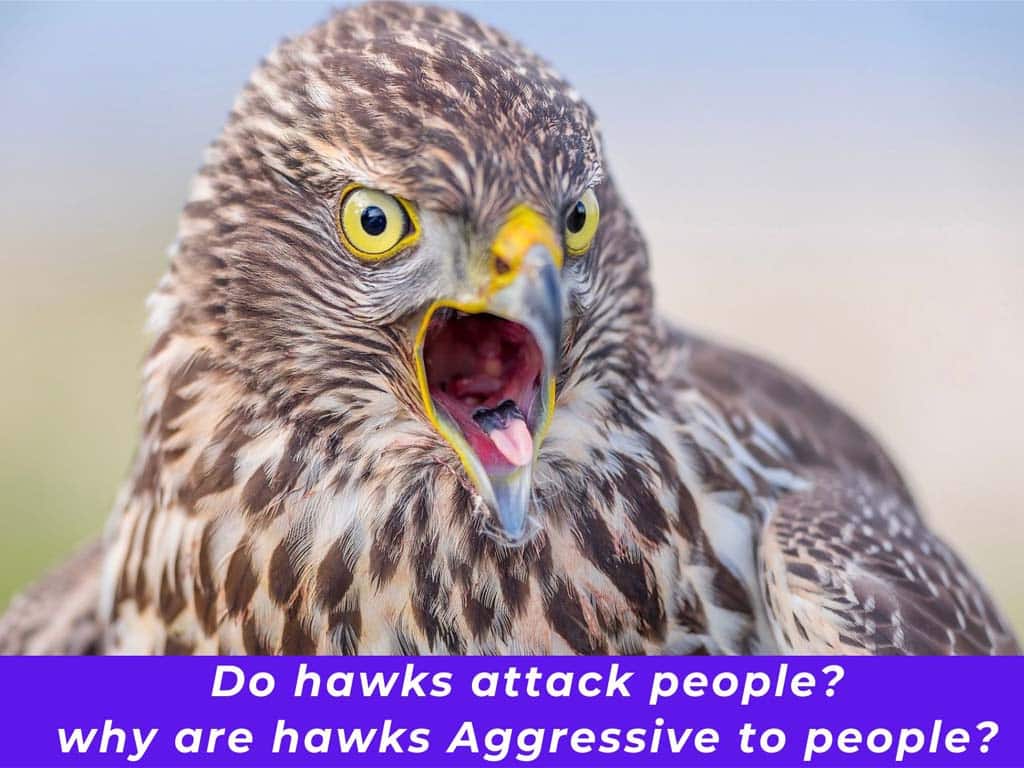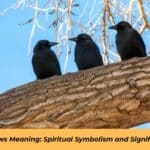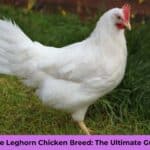Do hawks attack people? In the realm of wildlife encounters, few creatures evoke as much awe and trepidation as hawks. These majestic raptors, with their piercing gaze and razor-sharp talons, have long been the subject of fascination and fear.
But do hawks really pose a threat to humans? Let’s soar into the facts and separate truth from fiction in this comprehensive exploration of hawk behavior and human interactions.
While the question “Do hawks attack people?” may linger in the minds of outdoor enthusiasts and casual observers alike, the reality is that hawk attacks on humans are extremely rare.
These birds of prey are primarily interested in smaller animals as food sources, such as rodents, rabbits, and other birds. However, there have been isolated incidents where hawks have swooped down on humans, usually in defense of their nests or young.
It’s important to understand that when people ask, “Do hawks attack people?” they’re often conflating defensive behavior with predatory intent. Hawks are not actively seeking out humans as prey.
In most cases where interactions between hawks and humans have escalated, it’s because the birds felt threatened or were protecting their territory. Understanding this distinction can help alleviate fears and promote a more balanced perspective on these magnificent birds of prey.
Do Hawks Attack people? Understanding the Hawk’s Reputation
Hawks have garnered a reputation as fierce predators, often portrayed in folklore and popular culture as aggressive birds that pose a danger to peoples. However, the reality of hawk behavior is far more nuanced and complex than these simplistic depictions suggest.
Common Perceptions vs. Natural Behavior: Why People Wonder if Hawks Attack
Many people harbor misconceptions about hawks, viewing them solely as ruthless hunters. While it’s true that hawks are skilled predators, their natural behavior is primarily focused on survival and maintaining their ecological niche.
“Hawks are simply doing what nature designed them to do. Their so-called ‘aggression’ is often misunderstood defensive behavior or hunting instincts that rarely target humans.”
Do Hawks Really Attack people? Separating Fact from Fiction
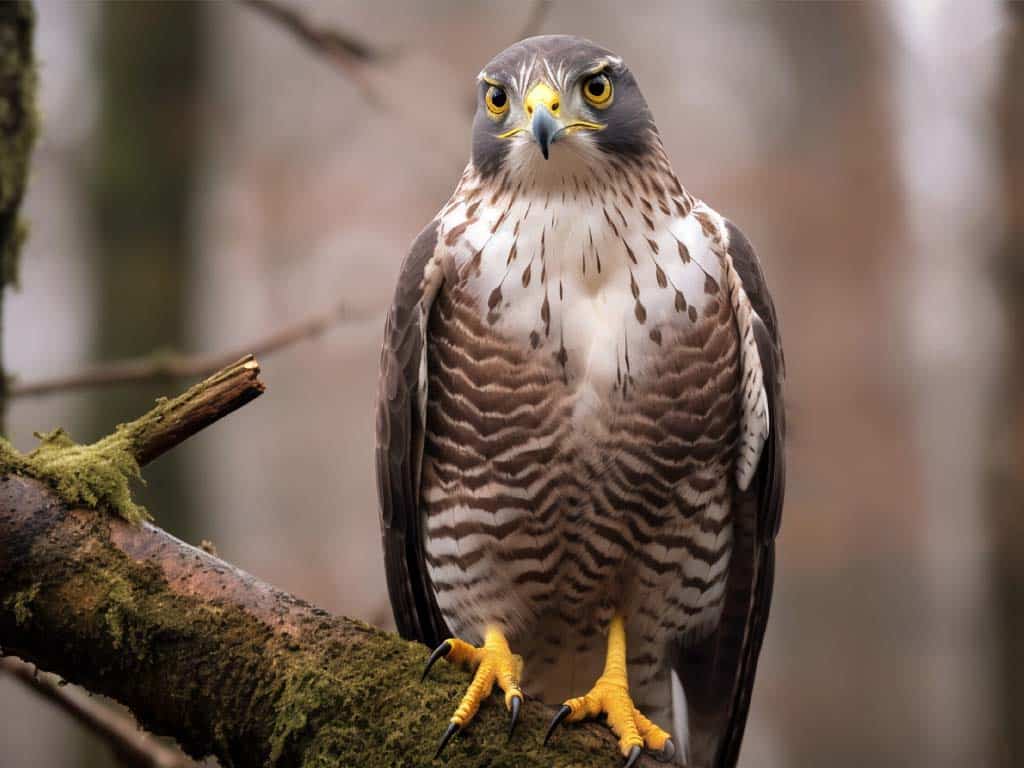
The short answer is: rarely. Attacks by hawks on people are exceptionally uncommon. Most reported “attacks” are actually instances of hawks defending their territory or nests, rather than predatory behavior targeting peoples.
Frequency of Hawk-people Confrontations: How Often Do Hawks Attack people?
To put things in perspective, let’s look at some data:
| Type of Interaction | Frequency | Notes |
| Hawk sightings | Common | Especially in urban and suburban areas |
| Close encounters | Occasional | Usually during nesting season |
| Defensive displays | Rare | Typically near nests or fledglings |
| Physical contact | Very rare | Often exaggerated in reports |
As we can see, while hawk sightings are common, actual confrontations are infrequent, and physical attacks are extremely rare.
Distinguishing Between Attacks and Defensive Behavior: Why Hawks Might Seem to Attack people
It’s crucial to understand the difference between an attack and defensive behavior. Hawks are not actively seeking out humans as prey. Instead, what might be perceived as an “attack” is usually a hawk protecting its nest or young.
- Defensive behavior may include:
- Loud vocalizations
- Swooping near intruders
- Fluffing up feathers to appear larger
- True attacks (extremely rare) might involve:
- Direct physical contact
- Use of talons or beak
Check this out Are Penguins Friendly Or Are Penguins Dangerous?
Understanding Hawk Behavior: Why Hawks Might Appear to Attack people
To truly appreciate why hawks might sometimes appear aggressive, we need to delve into their natural instincts and the factors that influence their behavior.
Natural Instincts and Territorial Nature: Factors Behind Perceived Hawk Attacks on people
Hawks are territorial birds, especially during the breeding season. This instinct to protect their space is crucial for their survival and the safety of their offspring. Key aspects of hawk territoriality include:
- Establishing and defending nesting sites
- Securing food sources within their territory
- Warding off potential threats to their young
Breeding Season Aggression: When Hawks Are Most Likely to “Attack” people
During nesting season, hawks become particularly protective. This period typically spans from late winter to early summer, depending on the species and geographic location.
Nesting season behaviors:
- Increased vigilance around the nest
- More frequent defensive displays
- Higher likelihood of swooping near perceived threats
Food Scarcity and Urban Encroachment: How people Activity Affects Hawk Behavior
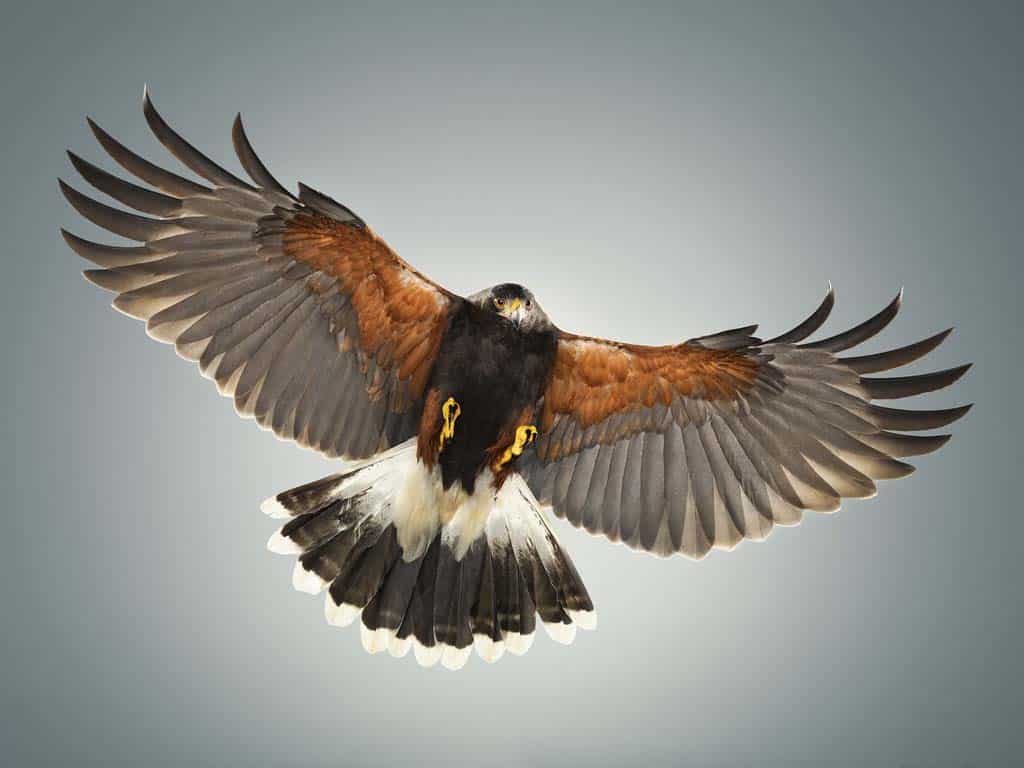
As human development expands into natural habitats, hawks are increasingly adapting to urban environments. This adaptation can lead to more frequent encounters with humans, especially when food is scarce.
- Factors contributing to urban hawk behavior:
- Limited natural prey in cities
- Attraction to areas with small pets or bird feeders
- Habituation to people presence
Check this out Why Do Crows Chase Hawks? Do Crows Hate Hawks?
Why Might a Hawk Appear to Attack People?
While hawks don’t target humans as prey, certain situations can lead to what appears to be aggressive behavior. Let’s explore the main reasons behind these encounters.
Nest Defense: Protecting Their Young from Perceived people Threats
The most common reason for hawk “aggression” is nest defense. During the breeding season, hawks become fiercely protective of their nests and offspring.
Signs of nest defense behavior:
- Loud, persistent cries when humans approach
- Flying in circles above the nest area
- Swooping close to intruders’ heads
Mistaken Identity: When Hawks Perceive people as Potential Threats
In some cases, hawks might mistake humans for predators, especially if we unknowingly come too close to their nesting sites. This misidentification can trigger defensive responses.
Habituation to people Presence: Urban Hawks and Human Interactions
As hawks adapt to city life, they may become less wary of peoples. This familiarity can sometimes lead to bolder behavior, which might be misinterpreted as aggression.
Hawk Species Most Likely to Interact with people: Understanding the Risk of Attacks
While there are many species of hawks, some are more commonly encountered in areas where humans live and work. Let’s take a closer look at these species and their typical behaviors.
Red-tailed Hawk: Common but Rarely Aggressive Towards people

The Red-tailed Hawk is one of the most common and widely distributed hawks in North America.
- Characteristics:
- Length: 18-26 inches
- Wingspan: 3.5-4.5 feet
- Weight: 1.5-3.5 pounds
- Behavior:
- Adaptable to various habitats, including urban areas
- Often seen perched on poles or soaring over open fields
- Generally less aggressive than smaller hawk species
Check this out 24 Yellow Birds In Ohio With Photos
Cooper’s Hawk: More Likely to Have Close Encounters with people

The Cooper’s Hawk is known for its agility and is often seen in suburban areas.
- Characteristics:
- Length: 14-20 inches
- Wingspan: 2-3 feet
- Weight: 0.5-1.5 pounds
- Behavior:
- Skilled at maneuvering through trees
- More likely to be involved in conflicts due to its preference for backyard habitats
- Known to occasionally target small pets
Great Horned Owl: Often Mistaken for Hawks in people-Wildlife Conflicts

While not a hawk, the Great Horned Owl is often mistaken for one and exhibits similar defensive behaviors.
- Characteristics:
- Length: 18-25 inches
- Wingspan: 3-5 feet
- Weight: 2-5 pounds
- Behavior:
- Nocturnal, but can be active during dawn and dusk
- Extremely territorial and protective of nests
- More likely than hawks to engage in aggressive behavior towards humans
Debunking Common Myths: Do Hawks Really Attack people?
Let’s address some of the most persistent myths about hawks and their interactions with humans.
Can Hawks Pick Up Babies? Addressing a Common Fear
This is perhaps one of the most alarming myths about hawks. The truth is, hawks are not capable of carrying off human infants.
- Facts:
- Most hawks weigh between 1-3 pounds
- They can typically carry only about 1/3 of their body weight
- The largest hawk species in North America, the Ferruginous Hawk, can carry a maximum of about 5 pounds
Reality check: A human baby weighs far more than any hawk could possibly lift.
Are Hawks Inherently Mean or Aggressive Towards people?
Hawks are not mean or aggressive in the human sense of these words. Their behaviors are driven by instinct and survival needs.
- Hawk behaviors often misinterpreted as meanness:
- Defending territory
- Protecting young
- Hunting for food
Check this out How and Where Do Geese Sleep? The Secrets of Goose Slumber
The Reality of Hawk Strength and Limitations: Can Hawks Truly Harm people?
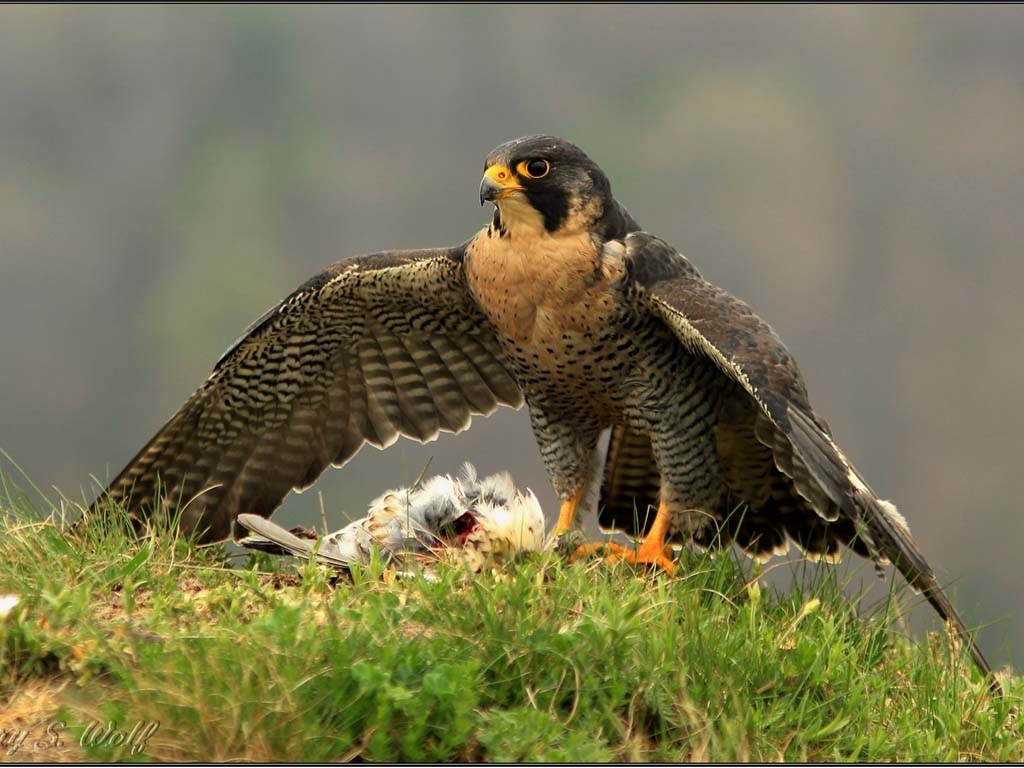
While hawks are formidable predators, their physical capabilities are often exaggerated.
- Hawk strengths:
- Excellent vision (up to 8 times sharper than human eyesight)
- Powerful talons for catching prey
- Hooked beak for tearing food
- Limitations:
- Cannot lift weights much heavier than themselves
- Primarily hunt small mammals, birds, and reptiles
- Avoid confrontations with larger animals, including humans
Hawk Attacks on people: A Realistic Risk Assessment
When assessing the actual danger hawks pose to humans, it’s important to consider the facts and compare the risks to other wildlife encounters.
Actual Danger Level to people: How Likely Are Hawk Attacks?
The danger level of hawk attacks on peoples is extremely low. Serious injuries from hawk encounters are exceedingly rare and usually occur only under very specific circumstances.
- Potential risks:
- Minor scratches or cuts (in extremely rare cases of physical contact)
- Psychological distress from close encounters
- Preventative measures:
- Avoid nesting areas during breeding season
- Do not attempt to handle or feed hawks
- Keep small pets supervised in hawk-prone areas
Comparison to Other Wildlife Encounters: Putting Hawk Attacks in Perspective
To put the risk of hawk encounters in perspective, let’s compare them to other wildlife interactions:
| Animal | Annual reported attacks in the US | Fatality risk |
| Dogs | 4.5 million | 30-50 deaths |
| Bees/Wasps | 500,000 | 50-100 deaths |
| Snakes | 7,000-8,000 | 5-6 deaths |
| Hawks | < 100 (mostly minor) | Extremely rare (no recorded fatalities) |
As we can see, the risk posed by hawks is minimal compared to many other animals we encounter regularly.
Coexisting with Hawks: Prevention and Safety to Avoid Perceived Attacks
Understanding how to coexist peacefully with hawks is key to preventing conflicts and appreciating these magnificent birds.

Recognizing Warning Signs of Defensive Behavior: Preventing Perceived Hawk Attacks
Being able to identify when a hawk is feeling threatened can help you avoid potential confrontations.
- Warning signs:
- Loud, persistent cries
- Flying in circles overhead
- Swooping or diving near you
- Fluffing up feathers to appear larger
Check this out Finches In Florida – The Complete Guide To Florida Finches
Proper Behavior in Hawk Territories: Reducing the Risk of Hawk-people Conflicts
If you find yourself in an area where hawks are nesting or hunting, follow these guidelines:
- Maintain a respectful distance from nests and perching areas
- Avoid sudden movements or loud noises
- If a hawk appears agitated, calmly and quickly leave the area
- Never attempt to feed or touch a hawk
Protecting Small Pets in Hawk-Prone Areas: Minimizing Potential Conflicts
While attacks on pets are rare, taking precautions can ensure the safety of your smaller animals:
- Supervise small pets when outdoors
- Provide covered areas in your yard for pets to retreat to
- Remove bird feeders that might attract hawks’ prey animals
- Consider using reflective tape or owl decoys to deter hawks (effectiveness varies)
What to Do If You Encounter an Aggressive Hawk: Responding to Potential Attacks
In the unlikely event that you find yourself face-to-face with an aggressive hawk, knowing how to respond can make all the difference.
Immediate Actions to Take: Handling a Perceived Hawk Attack
- Stay calm: Panic can escalate the situation
- Protect your head and eyes: Use your arms or an object like an umbrella
- Make yourself appear larger: Open your jacket or raise your arms
- Make noise: Shout, clap, or use a whistle to startle the hawk
- Move away slowly: Don’t run, as this may trigger a chase response
When to Seek Help from Wildlife Professionals: Addressing Recurring Hawk Conflicts
If hawk encounters become a persistent problem in your area, it may be time to call in the experts.
- Situations warranting professional help:
- Repeated aggressive encounters
- Hawks nesting very close to human dwellings
- Concerns about hawk behavior affecting public safety
Reporting Incidents: Why It’s Important to Document Hawk-peoples Interactions
Reporting hawk encounters to local wildlife authorities serves several important purposes:
- Helps track hawk populations and behavior patterns
- Allows for appropriate management of problem situations
- Contributes to public education and safety measures
The Ecological Role of Hawks: Understanding Their Importance Beyond people Interactions
Despite occasional conflicts, hawks play a crucial role in maintaining ecological balance.
Benefits of Hawks in Urban and Rural Ecosystems: Beyond the Fear of Attacks
Hawks provide numerous benefits to their environments:
- Natural pest control: Hawks help control populations of rodents and other small animals
- Biodiversity maintenance: As top predators, hawks help maintain species diversity
- Indicator species: Hawk populations can indicate overall ecosystem health
Importance of Birds of Prey in Pest Control: A Positive Impact on people Environments
Hawks are nature’s own pest control service, helping to keep populations of potential pest species in check.
- Common hawk prey that can become pests:
- Rodents (mice, rats, voles)
- Rabbits
- Pigeons
- Some insect species
Conservation Efforts and people Responsibility: Protecting Hawks Despite Fear of Attacks
Many hawk species face challenges due to habitat loss, pesticide use, and human persecution. Conservation efforts are crucial for their survival.
- Ways to support hawk conservation:
- Support local wildlife rehabilitation centers
- Advocate for the protection of natural habitats
- Educate others about the importance of raptors in ecosystems
Legal Protections for Hawks: Understanding the Laws That Prevent Harming Hawks
Hawks, like many birds of prey, are protected by law in many countries.
Overview of Laws Protecting Raptors: Why It’s Illegal to Harm Hawks, Even If They Seem Aggressive
In the United States, hawks are protected under the Migratory Bird Treaty Act of 1918. This law makes it illegal to:
- Hunt, capture, kill, or possess hawks without proper permits
- Disturb active hawk nests
- Collect hawk feathers or other parts
Consequences of Harming Hawks: Legal Ramifications of Responding to Perceived Attacks
Violating laws protecting hawks can result in severe penalties:
- Fines up to $15,000
- Potential imprisonment
- Revocation of hunting or falconry licenses
Balancing Human Safety and Wildlife Conservation: Addressing Concerns About Hawk Attacks Legally
While human safety is paramount, it’s crucial to find ways to coexist with wildlife that minimize harm to protected species like hawks.
- Strategies for coexistence:
- Public education programs
- Proper urban planning to preserve hawk habitats
- Non-lethal deterrent methods in problem areas
Conclusion: Fostering Understanding and Respect Beyond the Fear of Hawk Attacks
As we’ve explored the fascinating world of hawks and their interactions with humans, several key points emerge:
- Hawk attacks on humans are extremely rare and usually defensive in nature
- Understanding hawk behavior can help prevent conflicts
- Hawks play a vital role in ecosystem balance and pest control
- Conservation efforts and legal protections are crucial for hawk populations
By fostering a deeper understanding of these magnificent birds, we can learn to appreciate their presence in our world and find ways to coexist peacefully. Remember, respect for wildlife and their habitats is not just beneficial for the animals, but enriches our own lives and environments as well.
As we continue to share spaces with hawks and other wildlife, let’s strive for a balance that allows both humans and nature to thrive. After all, the presence of hawks in our skies is a testament to the health and diversity of our ecosystems – something we should all cherish and protect.
Frequently Asked Questions: Do Hawks Attack People?
Q1: Do hawks attack people unprovoked?
A: No, unprovoked attacks are extremely rare. Hawks may defend nests aggressively.
Q2: What should I do if a hawk swoops at me?
A: Stay calm, protect your head, maintain eye contact, and slowly back away.
Q3: Can a hawk pick up a small child?
A: No, even the largest hawks can’t lift more than about 5 pounds.
Q4: Are hawks dangerous to pets?
A: They can threaten very small pets (<3-4 lbs). Supervise pets outdoors.
Q5: Why do hawks scream?
A: To defend territory, communicate with mates, or warn off intruders.
Q6: How close can I get to a hawk before it feels threatened?
A: Stay 150 feet from nests and 50 feet from perched hawks.
Q7: Do hawks remember human faces?
A: No evidence suggests this, but they may recognize patterns of human activity.
Q8: Are there recorded deaths from hawk attacks on people?
A: No verified deaths in modern times. Serious injuries are extremely rare.
Q9: How can I tell if there’s a hawk nest near my property?
A: Look for frequent sightings, aggressive behavior, or hawks carrying nesting materials.
Q10: Is it legal to remove a hawk nest from my property?
A: No, it’s illegal without proper permits. Contact wildlife authorities for guidance.

